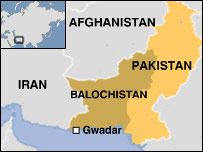Well, okay, the press conference by Angela Corey is over. Let us be clear, it was the performance of a politician and, not necessarily that of a grounded and by the book prosecutor. Seriously.
First off, Ms. Corey talked in repeated and continued platitudes and never, at any point, identified what the exact charge she was prosecuting Zimmerman under, nor her basis for doing so.
This is important to me, and the discussion herein at this blog, because 1) we are intelligent and actually care about such specifics, but 2) It is really important in a publicly and hotly contested case such as the Zimmerman shooting homicide of Trayvon Martin.
I stand by everything said in my preliminary post today as to why the path, via information filed and prelim process is not only appropriate, but absolutely smart. That still stands.
The only issue, at this point, is the actual charging of the criminal defendant, in this case George Zimmerman. Here is the SOLE charge filed by Angela Corey against George Zimmerman:
COUNT 1: IN THE COUNTY OF SEMINOLE, STATE OF FLORIDA, On February 26, 2012, GEORGE ZIMMERMAN, did unlawfully and by an act imminently dangerous to another, and evincing a depraved mind regardless of human life, although without any premeditated design to effect the death of any particular individual, kill TRAYVON MARTIN, a human being under the age of eighteen, by shooting the said victim, and during the commission of the aforementioned Second Degree Murder, the said GEORGE ZIMMERMAN did carry, display, use, threaten to use or attempt to use or attempt to use a firearm and did actually possess and discharge a firearm and as a result of the discharge, death or great bodily harm was inflicted upon any person, contrary to the provisions of Sections 782.04(2), 775.08(1) and 775.087(2), Florida Statutes.
That would be 2nd degree murder, as charged. Under what actual section of the pertinent Florida statute are we talking? Well, 782.04(2), 775.08(1) and 775.087(2). does that really tell you where and how the state is proceeding? No. Not to my eye, it does not. Take a look, if you can see the specific, definable, path to charge, then you are a better man and lawyer than I. If you can see, maybe, potential, possible, applicability then join the club. But, that is, of course, not the standard.
Here, however, is the manslaughter provision I proffered in the earlier post. I now see legal gadabout Mark Geragos on CNN saying the 2nd degree statute charged may be actually easier to prove up than a manslaughter charge. He is is fucking crazy loopy off his rocker if he really believes that bleating bullshit.
Seriously, I cannot speak as an active criminal prosecutor, but as a defense attorney, bring this on. If my client has to be charged, I would rather he be over charged, especially nebulously and with all the justification defenses available under Florida law, as either described and/or linked, in the earlier post.
So, to sum up, I would say it is a bit batty to charge the HIGHEST POSSIBLE CHARGE IMAGINABLE, and ONLY THE HIGHEST CHARGE IMAGINABLE, with no lesser included backups. But, hey, what me worry Angela Corey?
Yes, I am perplexed at this. Completely. Let the college of internet knowledge school us on why this is wrong.

